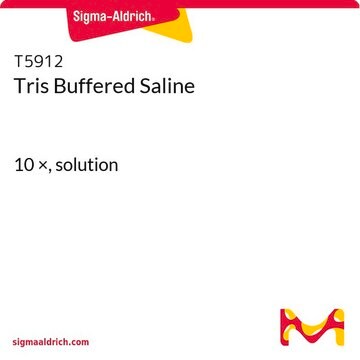All Photos(1)
About This Item
Beilstein:
3535773
MDL number:
UNSPSC Code:
12161700
PubChem Substance ID:
NACRES:
NA.25
Recommended Products
SMILES string
NC(CO)(CO)CO
InChI
1S/C4H11NO3/c5-4(1-6,2-7)3-8/h6-8H,1-3,5H2
InChI key
LENZDBCJOHFCAS-UHFFFAOYSA-N
Looking for similar products? Visit Product Comparison Guide
Packaging
6 bottles for the preparation of 1 L ready-to-use solution (each)
Storage Class Code
10 - Combustible liquids
WGK
WGK 1
Flash Point(F)
Not applicable
Flash Point(C)
Not applicable
Personal Protective Equipment
dust mask type N95 (US), Eyeshields, Gloves
Certificates of Analysis (COA)
Search for Certificates of Analysis (COA) by entering the products Lot/Batch Number. Lot and Batch Numbers can be found on a product’s label following the words ‘Lot’ or ‘Batch’.
Already Own This Product?
Find documentation for the products that you have recently purchased in the Document Library.
Customers Also Viewed
Seong H Chow et al.
Journal of leukocyte biology, 108(3), 967-981 (2020-06-13)
Staphylococcus aureus causes necrotizing pneumonia by secreting toxins such as leukocidins that target front-line immune cells. The mechanism by which leukocidins kill innate immune cells and trigger inflammation during S. aureus lung infection, however, remains unresolved. Here, we explored human-induced
Timothy J Kidd et al.
Journal of clinical microbiology, 47(5), 1503-1509 (2009-03-06)
Pseudomonas aeruginosa is an important cause of pulmonary infection in cystic fibrosis (CF). Its correct identification ensures effective patient management and infection control strategies. However, little is known about how often CF sputum isolates are falsely identified as P. aeruginosa.
Sean Ekins et al.
Drug metabolism and disposition: the biological fate of chemicals, 38(12), 2302-2308 (2010-09-17)
Drug-induced liver injury (DILI) is one of the most important reasons for drug development failure at both preapproval and postapproval stages. There has been increased interest in developing predictive in vivo, in vitro, and in silico models to identify compounds
Nigel Greene et al.
Chemical research in toxicology, 23(7), 1215-1222 (2010-06-18)
Drug-induced liver injury is a major issue of concern and has led to the withdrawal of a significant number of marketed drugs. An understanding of structure-activity relationships (SARs) of chemicals can make a significant contribution to the identification of potential
Zhichao Liu et al.
PLoS computational biology, 7(12), e1002310-e1002310 (2011-12-24)
Drug-induced liver injury (DILI) is a significant concern in drug development due to the poor concordance between preclinical and clinical findings of liver toxicity. We hypothesized that the DILI types (hepatotoxic side effects) seen in the clinic can be translated
Our team of scientists has experience in all areas of research including Life Science, Material Science, Chemical Synthesis, Chromatography, Analytical and many others.
Contact Technical Service



